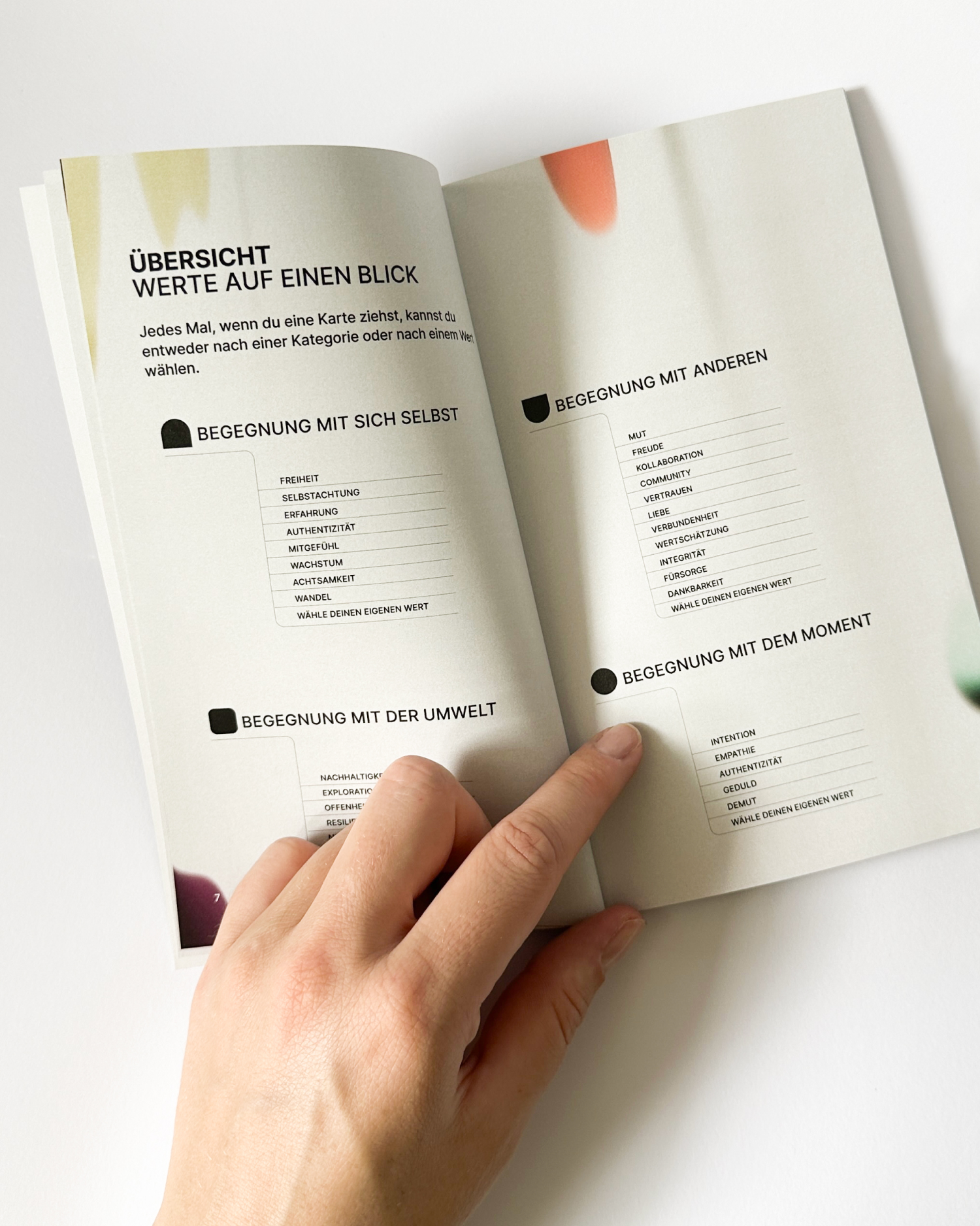Defining corporate values: Clear. Collaborative. Effective.
Why do some organizations feel close and coherent – while others remain distant? Often, the difference lies in the values . Not as posters on the wall, but as a lived attitude. This guide shows you how to define and formulate corporate values, and bring them to life in everyday life.
“Values are door openers – less about being right, more about perceiving, telling stories, and taking each other seriously.”
In 5 steps: Defining and formulating corporate values
This way you will find a clear, common core – without buzzwords, with real impact.
- 1) Collect (find) experiences: Where were we in flow? Where did we experience friction? Collect stories from projects, customer contacts, and conflicts.
- 2) Recognize (develop) patterns: Which attitudes recur? Which ones are missing? Cluster the stories—not the keywords.
- 3) Write (formulate) in plain text: Each cluster becomes a value with 1-2 sentences of effective language: “We ... so that ...”
- 4) Reality check (with employees): Does this work for us? Review examples, identify blind spots, simplify language.
- 5) Anchor in routines (live & communicate): Make values visible in decisions, meetings, onboarding and recognition.
Key questions for workshops
- What do we stand for when no one is looking? (Integrity over image)
- What decision would we make differently today – based on what value?
- What can a colleague expect from me? (specific behavior)
- How do our values manifest themselves in times of conflict, time pressure, and mistakes?
- How would customers know that we take this value seriously?
Examples: “Our corporate values” clearly formulated
This is what values that provide orientation sound like – without empty phrases.
- Trust: We create clarity and keep our promises – even when it’s difficult.
- Transparency: We proactively share information and justify decisions.
- Courage: We try new things, create small prototypes and learn quickly.
- Empathy: We listen, reflect perceptions and respect boundaries.
- Responsibility: We take ownership – for impact, the environment and togetherness.
- Customer focus: We engage customers early and shorten feedback cycles.
- Quality: We define “Done” together and regularly review standards.
Living values: examples from everyday life
Values only become true through action. These simple formats help you stay on track.
- Values check-in (10 min): Everyone briefly shares where a value was relevant during the week.
- Decide with guiding questions: “Which value guides us? What contradicts it? What do we learn?”
- Story collection: Successes and learning moments in which values became visible – share internally.
- Onboarding ritual: New colleagues choose a value and explain what it means to them.
- Recognition: Saying thank you with reference to values (“Thank you for your transparency in Project X”).
- Values Retrospective: One sprint – one value in focus. What helped? What blocked it?
Communicating corporate values: Examples
- Making values visible: short portraits with real team voices instead of slogans.
- Integrate into processes: Values field in templates for goals, roadmaps, retrospectives.
- Leadership as a role model: justifying decisions with reference to values.
- Share externally: Cases and learning moments on the website/LinkedIn – authentic rather than polished.
“Values in a company are a platform for interaction and decision-making support – not just another performance tool.”
Want to delve deeper? The Management Centre demonstrates how values strategically transform organizations – from mission statement to implementation.
Your next step
Values are not a destination, but a path. Start small: Choose two values, define concrete behavioral anchors, and make them visible over the next four weeks.




